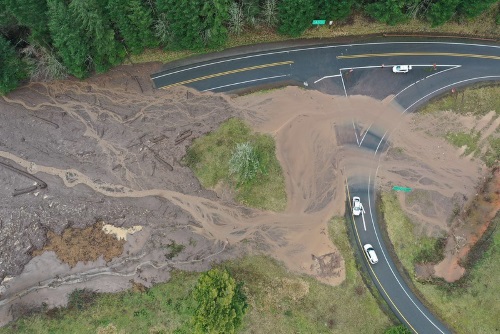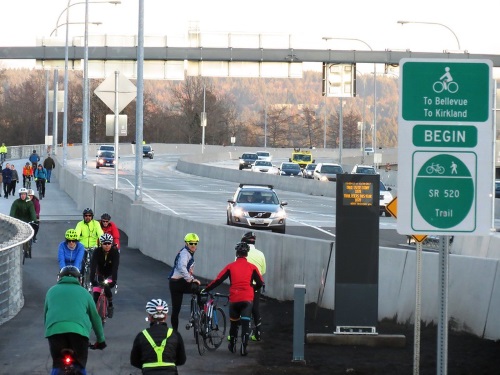FEDERAL ACTION
Energy & Sustainability: What to Expect from the 117th Congress and the Biden Administration – National Law Review
Pendulum swings in Clean Water Act regulation – Capital Press
How the Supreme Court could upend Biden’s green agenda – E&E news
NTSB Issues 14 Safety Recommendations Following Investigation of Natural Gas Explosion – NTSB (Press release)
COVID-19
Public Transit and Shared Mobility COVID-19 Recovery: Policy Recommendations and Research Needs – UC Berkeley
NEPA
Virginia groups sue U.S. Forest Service over new environmental review standards – Virginia Mercury
INFRASTRUCTURE RESILIENCE AND SUSTAINABILITY
U.S. Chamber urges infrastructure modernization plan to ensure nation’s long-term economic growth – Logistics Management
Will Utah become ‘epicenter’ of research to electrify transportation? – Deseret News
AIR QUALITY
TTI Researchers Develop Curriculum for Transportation Emissions and Health – Texas A&M University
Electrifying Freight: Pathways to Accelerating the Transition – Electric Coalition (link to PDF)
Polis gives update on state’s Greenhouse Gas Pollution Reduction Roadmap – KUSA-TV
ENVIRONMENTAL JUSTICE
Environmental Justice Report Highlights EPA Progress – Riverbank News
How can we implement education for climate action and climate justice? – Brookings Institution (Blog)
NATURAL RESOURCES
BNSF Plan Aims To Reduce Train-Related Grizzly Bear Deaths – Montana Public Radio
Pittsburgh Water And Sewer Authority Pleads Guilty To Violating Clean Water Act – KDKA-TV
More Blackouts Loom With Fire Threat Returning to California – Bloomberg Green
CULTURAL RESOURCES
10,000-year-old jewelry among artifacts found while clearing land for I-540 project – WTVD-TV
A Green Transformation for the ‘World’s Most Beautiful Avenue’ – CityLab
HEALTH AND HUMAN ENVIRONMENT/ACTIVE TRANSPORTATION
Pedestrian traffic deaths in Colorado are up 89% since 2009, AAA analysis shows – Denver Post
Richmond’s bike share expansion braked for pandemic but rolling again – Richmond BizSense
Nearly 300 miles were just added to the U.S. Bicycle Route System – Time Out
City of Oklahoma City installs 50 new bike racks, 5 repair stations – KOKH-TV
TRB RESOURCES/ANNOUNCEMENTS
COVID-19 Addendum to Critical Issues in Transportation – TRB
Measuring and Managing Freight System Resilience Workshop – early bird registration deadline February 8, 2021 – TRB
Lead Emissions from Small Aircraft Can Be Reduced, Benefiting Public Health – TRB
RFP: Alternative Methods to Manage Tree Growth Near Airports – TRB (ACRP)
Propose New Topics for the 2022 NCHRP Synthesis Program: Submissions due February 17 – TRB (NCHRP)
RFP: Design Guide and Standards for Infrastructure Resilience – TRB (NCHRP)
Propose New Topics for the 2021 TCRP Synthesis Program: Submissions due March 19 – TRB (TCRP)
Cities, Transit Agencies, and Shared Mobility Providers Should Collaborate to Fully Realize Transportation Potential Across Metropolitan Areas – National Academies of Sciences, Engineering, and Medicine
The Importance of Highways to U.S. Agriculture – USDA
FEDERAL REGISTER NOTICES
Hazardous Materials: Editorial Corrections and Clarifications – Pipeline and Hazardous Materials Safety Administration (Correction)
Pipeline Safety: Frequently Asked Questions on the Gas Transmission Rule – Pipeline and Hazardous Materials Safety Administration (Notification and request for comments)
Notice of Availability of the Records of Decision for a Highway Right-of-Way, Amended Habitat Conservation Plan and Issuance of an Incidental Take Permit for the Mojave Desert Tortoise, and Approved Resource Management Plan Amendments, Washington County, UT – Bureau of Land Management (Notice of availability)
Notice of Availability of the Las Vegas Metroplex Project Written Re- Evaluation/Record of Decision for Changes to the Final Environmental Assessment Designs – FAA (Notice of availability of the Written Re-evaluation/Record of Decision)
Glen Canyon National Recreation Area; Motor Vehicles – National Park Service (Final rule)
Gulf Islands National Seashore; Personal Watercraft – National Park Service (Proposed rule)
Pollutant-Specific Significant Contribution Finding for Greenhouse Gas Emissions From New, Modified, and Reconstructed Stationary Sources: Electric Utility Generating Units, and Process for Determining Significance of Other New Source Performance Standards Source Categories – EPA (Final rule)
Inland Waterways Users Board Meeting Notice – Corps of Engineers (Notice of open Federal advisory committee virtual meeting)
Notice of Matching Fund Opportunity for Hydrographic Surveys and Request for Partnership Proposals – NOAA (Announcement of matching fund pilot program opportunity, request for proposals, and request for interest by February 26, 2021)


